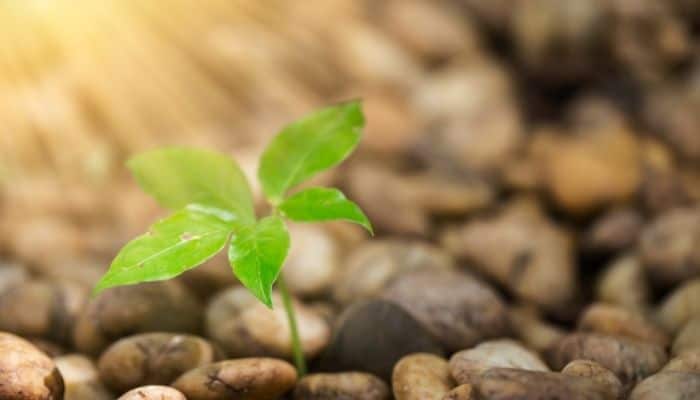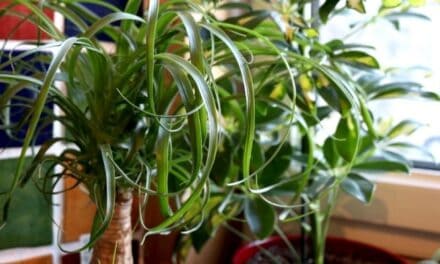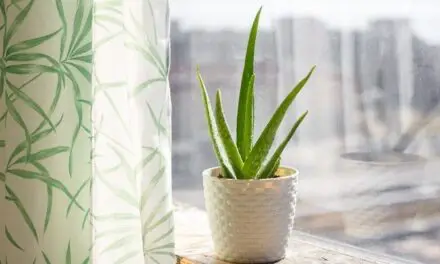If you’re getting into growing plants in any capacity, whether indoors or outdoors, you might start to wonder about many types of plant-related questions:
We’re all familiar with how plants use leaves to photosynthesize and the ways in which different plants use different types of leaves to fit their environment.
However, this raises some interesting questions, such as, do you get plants that survive without leaves, and what effect does losing all leaves have upon a plant?
Table of Contents
Can A Plant Live Without Leaves?

A plant can live for a limited amount of time without leaves.
How long the plant can live will depend on the cause of the leaf loss, how healthy the plant is, and how much stored energy the plant has to grow new leaves.
If your plant sheds all of its leaves and has enough stored energy to survive for long enough to grow new leaves, then there is every chance the plant can get back to full health.
But, if the leaves cannot be regrown because of pests, disease, or a lack of energy, the plant is not going to survive for long and will die.
Plants that have evolved to grow leaves depend on those leaves to produce food and cannot last without them.
Plants cannot survive long-term without leaves, although in some situations, plants may survive dropping all their leaves and still regrow to full health in spite of the loss.
Related Article: Why Is My Plant Putting Out Small Leaves? (Explained)
If A Plant Loses All Its Leaves Is It Dead?
A plant that has lost all of its leaves will not die as long as the leaf loss is temporary and the plant has the energy reserves to regrow new leaves.
If the loss is because they have been cut off – perhaps by an errant toddler – or eaten by bugs, it may still survive if it is healthy enough.
Plants with strong root systems and plenty of life in their stems/branches can regrow lost leaves and continue to thrive, provided they have enough food reserves.
Think of a tree, for example.
Most trees shed all of their leaves in the winter, and yet can survive perfectly well without them, because they have built up enough food reserves to manage without leaves for a period of time.
When the long days return, they regrow their leaves and resume photosynthesizing to produce more food.
Similarly, a garden or houseplant might survive the loss of leaves if it has enough food in reserve to regrow them before it runs out of energy.
But this all depends on the underlying health of the plant.
It will be particularly dependent on healthy roots to ensure it has the nutrients and water it needs to survive while it regrows its leaves.
What Should I Do If My Plant Loses Its Leaves?
If this happens, the first thing you should do is try to determine the cause.
To best help your plant, you need to understand why it lost its leaves.
If the plant is looking very sick, it may have a disease, or it could be getting too much or too little water, too much or too little light, etc.
All of these issues can cause leaves to drop but different types of issues can also have varying effects on your plant’s health.
For example, if the issue is poor drainage, where your plant’s roots have been sitting in a pool of water, your plant can rot and die very soon after shedding its leaves.
However, if your plant is drought-resistant and the issue is a lack of water, it should bounce back very quickly once it is receiving the right amount of water.
Fully researching your plant is key.
You want to understand what makes it tick, and what elements of its care can hurt it the most when lacking.
You need to work out what’s causing the problem first.
If the leaves have been lost as a result of an accident, you may be able to save your plant, but you need to check whether it’s still alive.
Check The Stem
Start with the stem.
Is it firm and pliable, or does it snap if you gently bend it?
If it snaps, the stem may be dead already.
Check The Roots
Next, check the roots.
Again, they should be pliable and feel firm.
If they have rotted or dried out, the plant is likely dead and can’t be saved.
How To Save A Plant That Has Lost All Its Leaves
If it looks like there is some life left in your plant, start by trimming off any dead growth.
By removing dead growth, your plant can focus whatever energy it has into developing buds and regrowing leaves.
Remove excess stem and roots, leaving only healthy growth.
You may wish to re-pot the plant in fresh soil, especially if it’s too wet or if you suspect fertilizer or something else in the soil is damaging the plant.
Water it well, but don’t drown it, and stand it somewhere shady so that it does not get burned by the sun while vulnerable.
Not all plants will survive, but some can grow back even if only their rootstock is left, so it’s always worth trying to save the plant.
Trim back dead growth and nurture it as it starts to re-sprout by keeping the soil moist.
Hopefully, you will soon see baby leaves unfolding again!
Do All Plants Have Leaves?
Some plant species, such as moss, most types of cacti, and at least one type of orchid do not have leaves at all and they survive fine without them because they have evolved to do so.
An example would be cacti, which have spines instead of leaves.
These serve a similar function, but they do not photosynthesize and although some people theorize that they are modified leaves, clearly cacti do not need leaves to survive.
Moss also does not have traditional leaves, but can still photosynthesize, and depends on light for its growth.
There is also a very interesting type of leafless orchid called Praecox Anthus Aphillus, which survives with only roots and peduncles.
The green peduncles and roots of this orchid can carry out photosynthesis and produce food for the plant without the need for leaves.
Conclusion
Plants without leaves are uncommon, and most plants need leaves to survive.
Healthy plants may manage to overcome the loss of their leaves and regrow them if they have good rootstock and are generally healthy, but this depends on the species and their conditions.
Some plants will not survive losing their leaves even if they are healthy, so it’s important to care for your plant and pay attention to any loss of leaves, which can indicate major problems.




